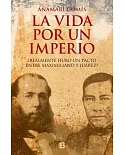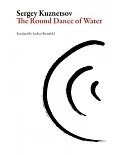Enter the world of Rodrigo de la Pe簿聶翻a-who is orphaned by the Inquisition but survives to join Spanish mercenaries in the interminable wars in Italy. Intrigued by talk of land and glory in the
Indies, he abandons the girl he has impregnated and travels to Castile, where, in an act of premeditated revenge, he visits retribution on those who years earlier betrayed his family. Then he
escapes to Cuba and joins Hernan Cortes in an expedition to the newly discovered Mexico. The rest of the story is the fabulous, incredible, sometimes ridiculous Conquest of Mexico, in which
fewer than five hundred renegades assault an empire with over 250,000 men under arms for more than two years-with a result of defeat and victory, betrayal and greed, brutality and stupidity,
human sacrifice and cannibalism. Rodrigo de la Pe簿聶翻a is there for all of it, and then is accused of treason by Cortes. So de la Pe簿聶翻a is forced to join the Mexican enemy and participates in
the final battles on the Mexica side. Skull Rack actually begins in 1581, sixty years after the fall of Tenochtitlan. De la Pe簿聶翻a has become Inquisitor-General of Spain and Bishop of Mother
Church; he has systematically insinuated himself into the fabric of the Holy Office "to subvert and corrupt it." De la Pena has arrested an Inquisitor, the Jesuit scholar and priest Enrique
Mendoza, who has written a book, Las Historias Glorias, on the glorious Conquest of Mexico. Under threat of death, Mendoza rewrites his book to de la Pena's specifications. Skull Rack is the
story of the rewriting of Mendoza's history and the interactions of these two supposed men of God. The story of Skull Rack continues with its sequel, Hummingbird God.





















